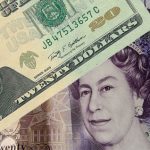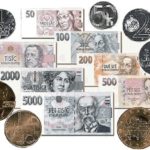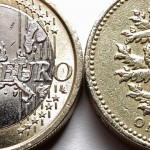Australian dollar traded lower against its US counterpart on Friday, as yesterdays employment data concerning Australia fueled concerns that nations central bank may further reduce borrowing costs in order to stimulate economy.
AUD/USD touched a daily low at 0.8802 at 2:20 GMT, after which consolidation followed at 0.8810, falling 0.13% for the day. Support was likely to be received at January 16th low and also the lowest level since August 25th 2010, 0.8777, while resistance was to be met at January 16th high, 0.8906.
The Australian Bureau of Statistics said on Thursday that employers in Australia unexpectedly cut jobs in December, which may urge the Reserve Bank of Australia (RBA) to further reduce borrowing costs. Economy lost 22 600 job positions in December, which confounded experts’ expectations of a job gain of 10 000. In November nation’s economy managed to add 15 400 new jobs, which was a revision down from 21 000 jobs previously.
At the same time, the rate of unemployment in Australia remained unchanged at 5.8% in December, which came as a result of the weaker participation rate during the same month, 64.6%, after a month ago the rate was 64.8%.
Australian dollars largest annual decline in five years in 2013 did not prevent Reserve Bank of Australia Governor Glenn Stevens from underscoring the need for a weaker national currency. Stevens has said that the exchange rate of the Aussie was “uncomfortably high” in statements following banks decision on monetary policy on November 5th and December 3rd. Policy makers has maintained borrowing costs at a record low level of 2.50%, after trimming them by 2.25% since November 2011.
Traders saw a 44% probability that the RBA will cut its benchmark interest rate by the middle of this year, according to swaps data compiled by Bloomberg. Yesterday the odds of such a move were 43%.
“Monetary authorities in Australia are emphasizing their stance of checking currency strength,” Hideya Kubo, a senior fund manager at Diam, said in a phone interview on January 15th, cited by the same media. “The Australian dollar will have a hard time rising this year, as interest-rate hikes by the RBA are also likely to be in the distant future.”
Australian economic growth will probably expand by 2.7% during this year and by 3% in 2015, according to the median estimate of economists.
Meanwhile, on Thursday the Department of Labor in the United States reported that the number of initial jobless claims dropped to 326 000 during the week ended January 11th, which marked the lowest number since November. Analysts had expected that people who filed for unemployment assistance will be 328 000, after their number have been revised down to 328 000 from 330 000 in the preceding week.
In addition, yesterday the greenback found support after the Federal Reserve Bank of Philadelphia said its manufacturing activity index improved to a reading of 9.4 in January, surpassing preliminary estimates of a reading of 8.8, while in December the index came in at 6.4. The reading reflects the difference between optimistic and pessimistic forecasts, measured as a percentage, regarding business conditions in manufacturing in the region.
Elsewhere, the Aussie was steady against the euro, with EUR/AUD cross dipping 0.03% to trade at 1.5439 at 8:10 GMT. AUD/NZD pair was gaining 0.59% on a daily basis to trade at 1.0626 at 8:10 GMT.





